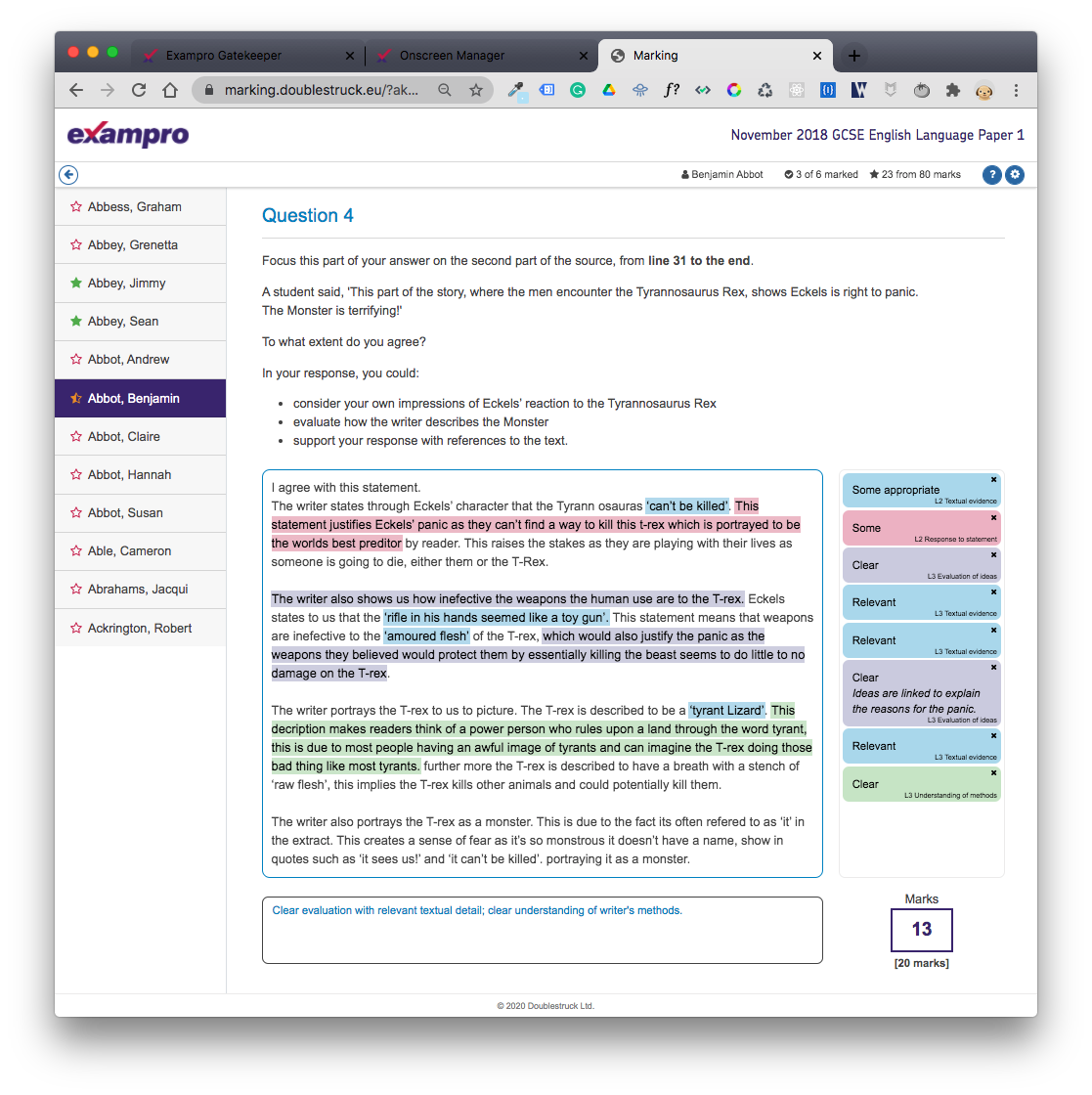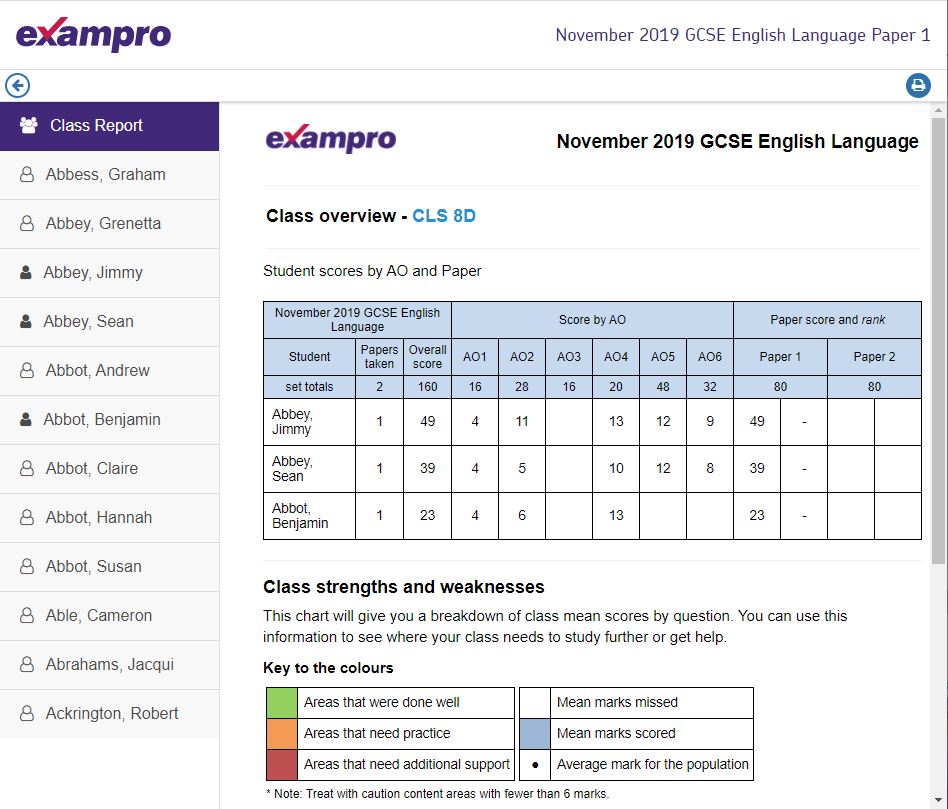Explained: What’s it like to sit a GCSE online?

There is a growing sense that if we could move national exams online, the assessment system would be more robust when responding to external shocks such as the disruptions caused by the pandemic.
Last week Tes revealed that there has been a notable change in attitude at the Department for Education towards the introduction of on-screen GCSEs and A levels, following the cancellation of exams two years in a row because of Covid-19.
And today we have reported on how preparations for the big switch to digital are already well underway at England’s big three school exam boards.
Revealed: How online GCSE trials have already begun
Analysis: How long would it take to introduce online GCSE exams?
Exclusive: GCSEs 2021 - DfE wanted to move exams online
Making the leap: Where have on-screen exams been introduced?
But what might it be like for students to sit an online GCSE? Tes joined Laura Lassman, managing director of Doublestruck, a company owned by the AQA exam board, to find out.
Ms Lassman’s operation has already developed Exampro - an online platform of searchable past AQA papers - and Testbase, an online skills question bank for primary pupils.
Now Doublestruck is delivering a pilot of on-screen GCSE English language mocks for AQA, to offer to teachers to use for formative assessment purposes.
Research into online GCSE exams
Lassman walked Tes through a demo of the on-screen paper.
The English language pilot is less different from its pen-and-paper parent than might be expected. The five questions and source material (usually a paper insert given to students along with the exam) are exactly the same as the 2019 AQA paper.
Admittedly, students would first need to log on to Exampro with credentials provided for them by their school. But once they have accessed the paper from a tab on the left, the differences between this test and a printed paper seem cosmetic at most.
The first question, worth four marks, requiring students to list four things they learn about the source material, seems identical to how it appears in paper format.
One critical difference is that as the source appears alongside the questions on-screen, students could potentially copy and paste from the source into their answer.
Ms Lassman says that while this functionality was not available for the pilot - because of the difference from the paper experience - there are plans to change the software, so that students can copy and paste from the source. After all, she says, you are testing ability to select relevant text, not typing speed.
The other key difference is that, for open-ended answers in the rest of the paper, there is a word count. In some ways, this replicates the lines produced in an exam paper to guide students about how much to write.
However, a word count seems more definitive. Most teachers have had students who, despite the lines in a paper exam, attempt to squeeze in four or five paragraphs to secure only a few marks.
For online exams, teachers could tell classes that for question 3, for example, they need only produce 200-word answers.
Otherwise, the online paper looks similar to the printed exam. In some ways, this is because any form of digital assessment, whether formative or summative, is still being developed and tested. But AQA says that as trials of online exams develop, this could change.
“The work Doublestruck is doing is designed, for now, to replicate pen and paper quite closely, because that’s what students will still be doing,” an AQA spokesperson said.
“Looking beyond that, we’d look to adapt assessments so that they work better on-screen.”
As a former English teacher, my only concern might be whether students will respond to a digital source in quite the same way. Will they be able to annotate or highlight the text? How can they underline a pertinent point? However, exam boards suggest that, as these tests develop, Stylus pens or other technology could be used to enable students to write on-screen.
For some students, being able to touch-type their way to a high grade, rather than suffering from cramped hands at the end of a two-hour paper. would be a blessing indeed. Presently, they can be held back by their writing speed or handwriting style, even if they are given extra time to accommodate for this.
How would marking change?
The most interesting distinctions between this kind of assessment and a pen-and-paper English exam is that teachers could use the system to make their marking more targeted and specific.
For the English language mock trial, used by 47 schools as a formative assessment, teachers are able to highlight aspects of an answer that fulfil the mark scheme’s levels, as well as adding their own comments.
These could be shared with the student, and provide a clear, colour-coded overview of where students are meeting assessment objectives.

For example, in the answer above, the teacher has highlighted where a student is meeting Level 3 assessment objectives of “clear evaluation of ideas” and “relevant textual evidence”, which could be used for highly focused formative feedback.
With a subject like English, it can be difficult to help students see exactly what the mark scheme is looking for, as the descriptors do sound incredibly subjective. I remember the criteria for the old A* in writing - “sophisticated, impressive” - prompting a lot of speculation.
In the Exampro mock, teachers can use these descriptors to highlight exactly where elements of the mark scheme have been reached, and how, as well as adding their own comments to support students, which they can then respond to.
Teachers would also be able to see how their class ranked within the population of Exampro users, as well as their overall performance for different questions, allowing them to target their teaching - for instance, by reteaching accuracy for the writing component of the exam in question five if students were underachieving in this area.
Currently, the technology, therefore, does exist to produce online exams, although there would need to be further trials and pilots to see if this could be done to scale nationally.
And AQA does point out that Exampro on-screen is being developed for teachers to use as a formative assessment tool but is not intended for high-stakes examination.
Ms Lassman said that one of the greatest barriers to rolling out on-screen GCSEs and A levels may be how well equipped schools are.
“I do think the biggest challenge is going to be school infrastructure,” she said.
“In 2003, when there were plans for impending on-screen examination, schools were not set up for them, and even now if you did it with an iPad or tablet, how well would it work? What schools have in their capacity will govern [the introduction of on-screen tests] far more than anything else,” she added.
What seems clear is that any online exams will, at first, look fairly similar to their paper counterparts. Sources in the sector said it is highly important that any change is led by what the assessment is designed to do, rather than using technology for the sake of it.
In terms of a “blue sky” future of adaptive testing, this may not be on the cards for years. But for students who yearn to be set free from hours of long-hand, the Exampro trial suggests a paper sat entirely online is more than possible.
You need a Tes subscription to read this article
Subscribe now to read this article and get other subscriber-only content:
- Unlimited access to all Tes magazine content
- Exclusive subscriber-only stories
- Award-winning email newsletters
Already a subscriber? Log in
You need a subscription to read this article
Subscribe now to read this article and get other subscriber-only content, including:
- Unlimited access to all Tes magazine content
- Exclusive subscriber-only stories
- Award-winning email newsletters
topics in this article




